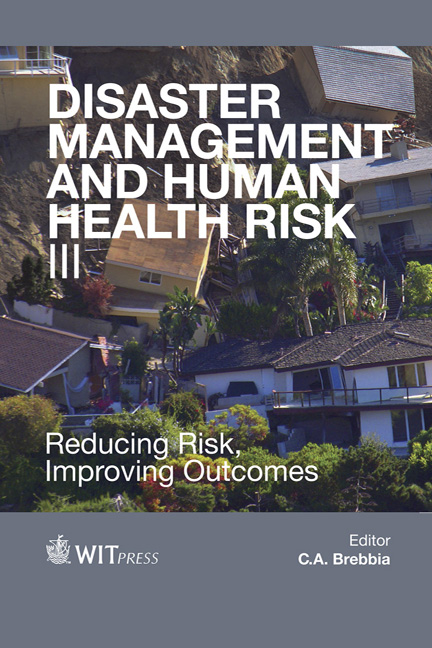Integrated Risk Assessment To Natural Hazards: Case Study – Motozintla, Chiapas, Mexico
Price
Free (open access)
Transaction
Volume
133
Pages
11
Page Range
281 - 291
Published
2013
Size
2,584 kb
Paper DOI
10.2495/DMAN130251
Copyright
WIT Press
Author(s)
D. A. Novelo-Casanova, O. Oropeza, E. Mansilla, J. L. Macías, I. Alcántara, F. J. Cantarero, M. Figueroa, F. Rodríguez-Van Gort & J. M. Sánchez-Núñez
Abstract
In this work we assess the risk to natural hazards in the community of Motozintla located in southern Mexico in the state of Chiapas (15.37ºN, 92.25ºW) with a population of more than 20,000 people. Due to its geographical and geological location, this community is continuously exposed to the impact of many different natural hazards (earthquakes, landslides, volcanic eruptions, and floods). To determine the level of risk to natural hazards in the community, we developed integrated analysis of seismic microzonation, landslide and flood susceptibility as well as volcanic impact using standard methodologies. Vulnerability was quantified from interviews of local families considering structural and socioeconomic variables. The families surveyed were randomly selected considering a sample statistically significant. All results were spatially analyzed using a Geographical Information System (GIS). Our results indicate that the community of Motozintla is highly exposed to floods, landslides and earthquakes and to a lesser extent to the impact of volcanic eruptions. The locality has a high level of structural and socio-economic vulnerability to the main identified hazards (floods and landslides). Another major observation is that the community organization for disaster prevention is practically nonexistent. These natural and social conditions indicate that the community of Motozintla has a very high level
Keywords
risk assessment, natural hazards, social vulnerability, Chiapas, Mexico




